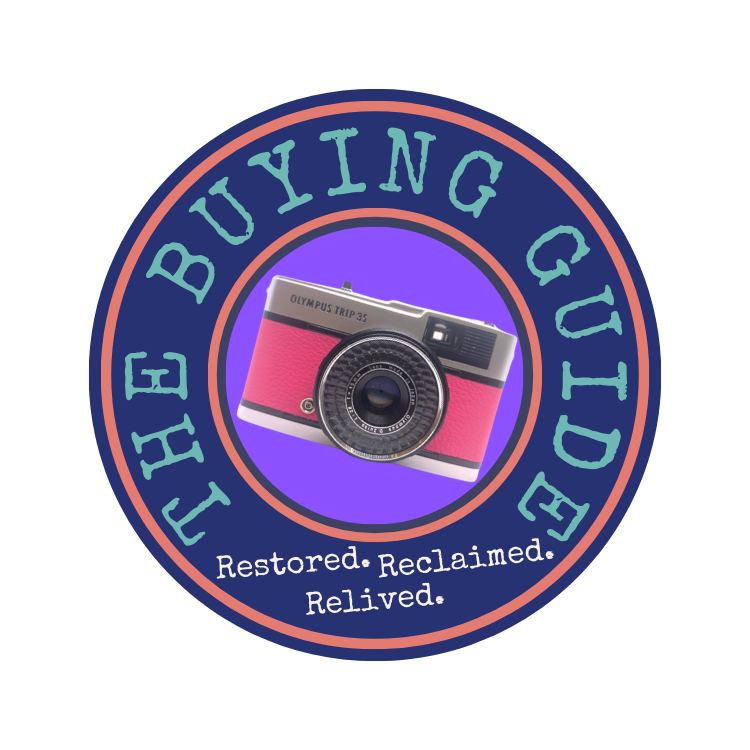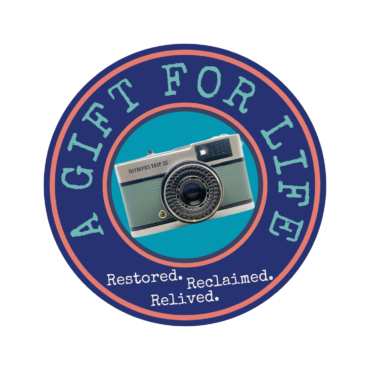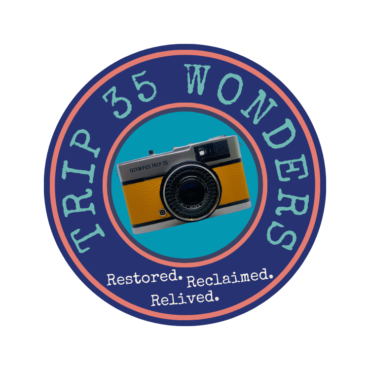The Olympus Trip 35 Buyer’s Guide: Your Path to a Worry-Free Purchase.
Introduced in the 1960s, this iconic camera combines simplicity, reliability, and excellent image quality. If you’re considering buying a vintage Olympus Trip 35, this buyer’s guide will help you make an informed decision and ensure a worry-free purchase.
The aim of this blog is to highlight what to look for before buying a vintage Olympus Trip 35 camera.
It is my thoughts randomly put down on “paper” from my experience of purchasing, repairing and servicing this iconic camera. I hope you find the information useful and it will help you to make a good decision to buy a quality used Trip that will provide you with many years of good times and cracking photos. There are many places to buy used Trip 35’s and my personal conclusion from what you will read below is to buy from a reputable seller like me 😉 or find a camera that you can physically check over and test in your hands. There are bargains to be had from private sellers on auction sites but most cameras that have been stored for many years in conditions that are not best for the external and internal parts of the camera will inevitably lead to problems and / or disappointment.
All the best with your camera search.
Jason
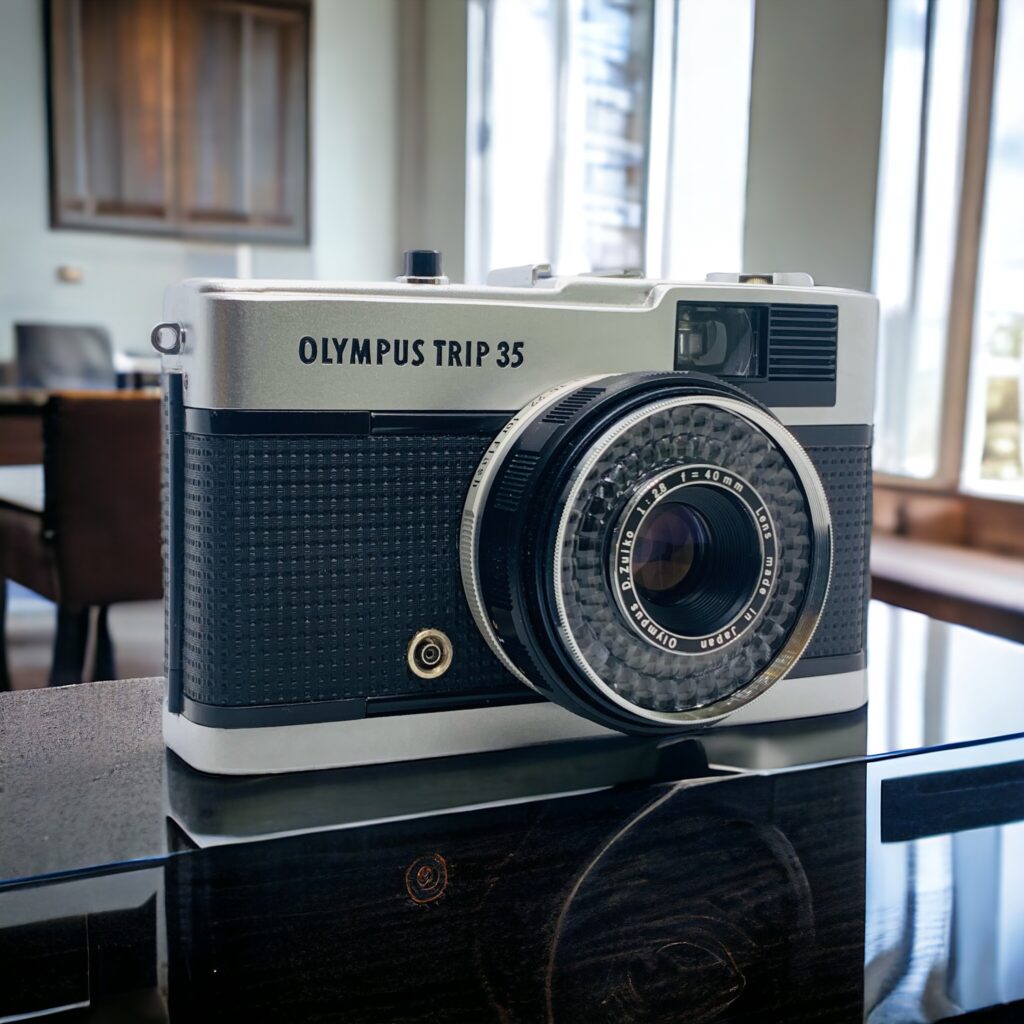
Introduction
The Olympus Trip 35 holds a special place in the hearts of film photography enthusiasts, me included. Sometimes I find it hard selling a camera that I’ve worked on for a long time to make it work like new and look fantastic again. Every camera I have worked on has its own personality, history and curiosities which I love.
Why Choose the Olympus Trip 35?
In my opinion the Olympus Trip 35 stands out for several reasons.
Its compact design makes it a perfect travel companion, while its fully automatic exposure system simplifies the shooting process. The camera’s sharp Zuiko lens delivers stunning images, making it a favourite among photographers seeking that classic film look. I personally think it is one of the best-looking cameras ever built and I’ve worked on so many cameras to know that the engineering and build quality of these little gems is second to none. The oldest cameras are now nearly 60 years old and my personal 1968 Trip still works like it did when it left the factory in the month and year I was born!!! Unlike me!
Main Things to Consider When Buying a Vintage Olympus Trip 35.
When purchasing a vintage camera like the Olympus Trip 35, it’s essential to pay attention to certain key aspects:
- Overall Condition: Look for signs of wear, tear, and rust, but also check if all functions work smoothly. Check the lens settings, focus, Iso and F stops.
- Shutter and Lens: Test the shutter speeds for accuracy and inspect the lens for scratches, fungus or haze.
- Light Meter: Ensure the light meter accurately measures exposure levels. If the light meter has “died” then it’s game over for that camera… unless you want to use it as a manual exposure camera only.
- Viewfinder and Focus: Check the viewfinder for clarity and ensure the focus mechanism operates correctly.
- Aperture Blades: These should open and close smoothly through the F stops and varying light conditions. It is a common fault on a lot of old cameras to have sticky or stuck apertures through lack of use and dirt / oil build up.
More Things to Consider When Buying a Vintage Olympus Trip 35 and some of the less known!
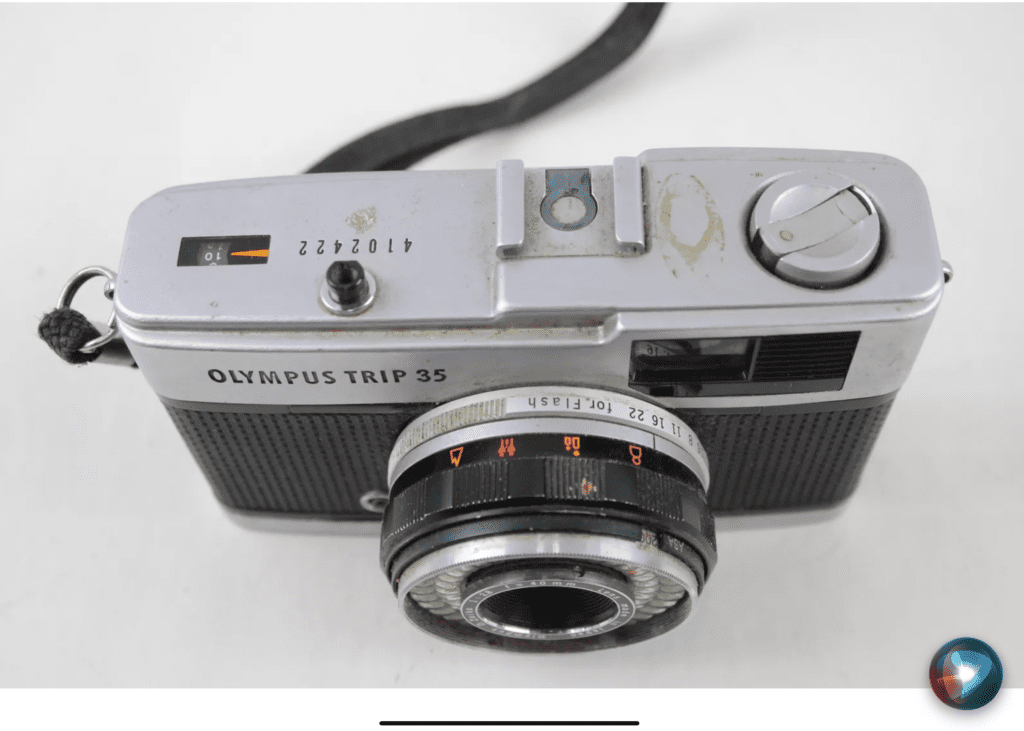
Dents – look for dents and dings especially on the outer Iso ring oo the lens and also the top and bottom metal covers. Often a big dent will mean some quite serious camera trauma that may have damaged the inside of the camera.
Chips / Rust – Check the paint for chips or roughly painted areas which may hide underlying rust. Pristine examples have usually been well cared for and stored correctly in dry conditions.
Lugs Rust / Damage – This perhaps is more of a personal bug bear of mine. The two small lugs on the sides of the camera where the wrist / camera strap is fitted can often be very rusty and / or marked with scratches caused by the metal hoops from a strap rubbing on the camera and the lugs. I’m just not into cameras with tatty and rusty sides. It spoils the look.
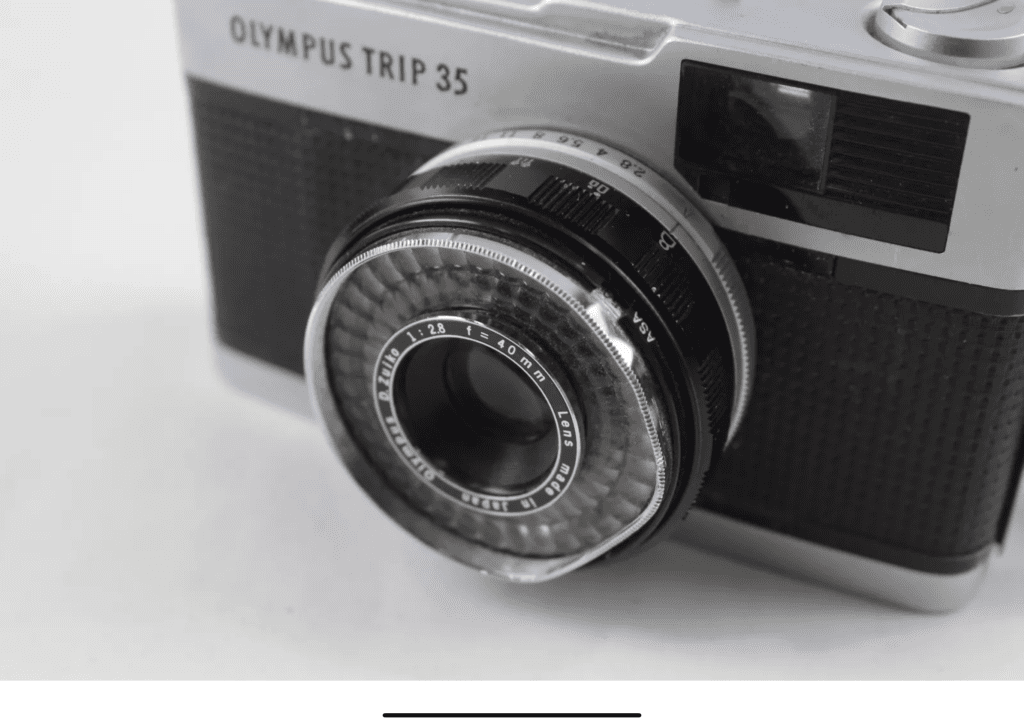
Mould/ Fungus (Camera Body) – if the camera body has evidence of mould / fungus on the body, then this could indicate that the camera has been stored in a high humidity environment. Most marks can be cleaned off but high moisture levels inside the camera are not good for working parts.
Misaligned panels – Cameras that have been opened a lot or subject to knocks can show signs of misalignment. Just like you would check the panels on a second-hand car, check the lines connecting the external parts for consistency. Also, it is not uncommon for the rear door to be misaligned and not click correctly to the body. This can let light into the film chamber which will spoil any photos you take.
Scratches – Check the body for scratches. Most cameras will have signs of wear and tear and a lot of fine scratches can be removed with a good quality metal polish. This is not the case for deeper scratches.
Lens Cap – Try and find a camera that comes with a lens cap. This is really important as it indicates that the camera would have been stored with the lens cap on which protects the selenium light cells from light damage. Over time, consistent light entering the cells can deplete the functionality until the selenium meter in effect “dies” and the camera is pretty much useless after that.
Hot Shoe Cover – New cameras were sold with an Olympus branded hot shoe cover to protect the delicate plates and flash guide ridges on the hot shoe. Most original Olympus branded covers have been lost. We have a few in stock here but all our cameras come with a new replacement.
Skin and Dirt – Bit gruesome, but old cameras do come with remnants of their previous owners on them. This can be grease, skin and make-up etc. If you want a clean camera then be prepared to spend some quality time cleaning the camera body with alcohol to remove and sanitise. All my cameras have this task completed for you.
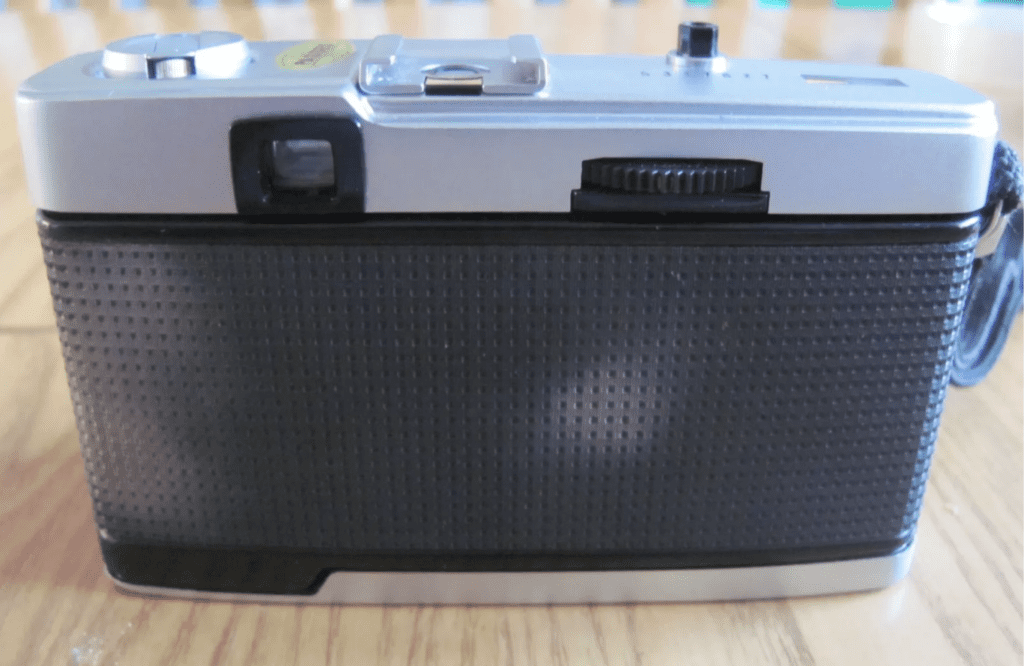
Leather skin thickness, cut quality, alignment and glue – Check carefully any camera you find that has had the old cover removed and a new one applied. Quite often you will find materials that are too thick for the camera body and so the new cover is raised higher than the metal body. This not only looks awful but can lead to the new cover coming away from the body whilst catching the raised seam. The correct thickness for a re-cover on an Olympus Trip 35 is 0.5mm. This is quite thin and often difficult to handle which is why some people cover in thicker material. I use professional grade leather of the correct thickness and spend considerable time ensuring that the new cover fits properly. If I am not entirely satisfied with the new cover then I would rather remove it and start again. Check also that the glue used is up for the job.

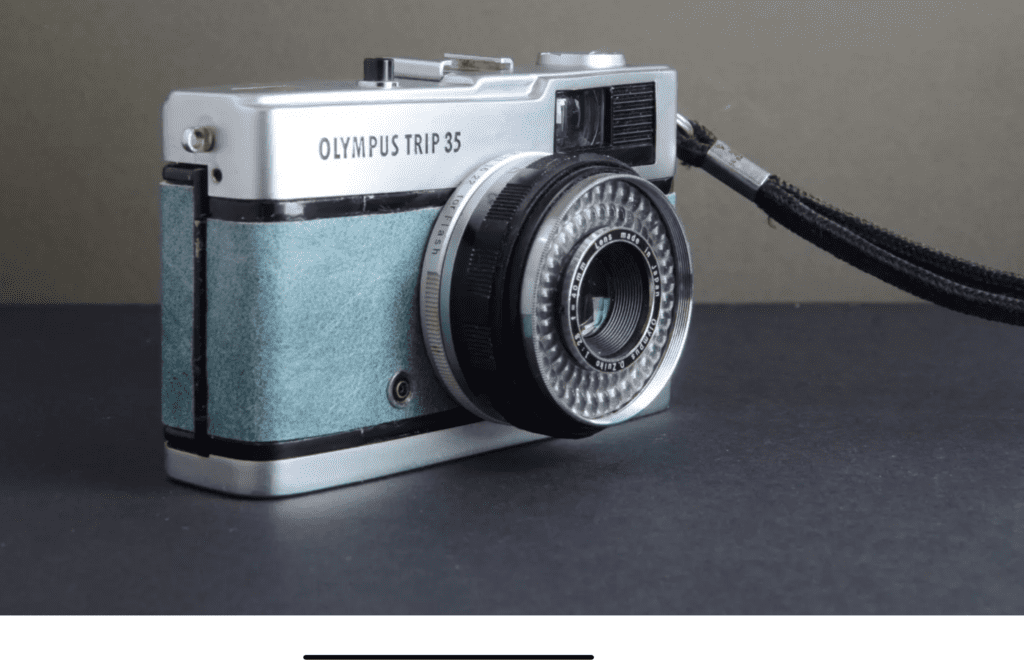
Lens Dust – The Zuiko lens set up on an Olympus Trip 35 is a precision bit of engineering. There are two glass lenses on the Trip. Cleaning any haze or dust from the exterior surface of the front lens is an easy job using quality lens cleaner and soft cotton buds or a micro fiber cloth / lens cloth. Cleaning the surfaces on the rear of the first lens and both sides of the second lens requires the camera to be stripped in a methodical way and rebuilt. I always advise that this only be completed by someone fully knowledgeable and competent. If the lens is taken apart incorrectly then the delicate and specific factory calibration for the stepped range focus can be altered meaning the camera will not focus correctly on the 4 focus settings.
Lens Scratches – Micro scratches although unsightly should not interfere with the quality of your photos but don’t buy a camera with large / deep scratches on the lens. All my cameras come without scratches on the lens and no dust or haze either.
Lens Fungus / Haze – This can be an indication that the camera has been subjected to wet conditions in the past or has been stored in a damp environment. This can be resolved, but the same principle is applied to Lens Dust. i.e. the camera will need to be carefully stripped and cleaned.
Viewfinder Dust – quite common in cameras and can be removed carefully by removing the top chrome plate and the black viewfinder cover tape. Be careful not to trap any wires and ensure a good seal on any top tape replaced. Whilst in the viewfinder, I always tighten the actual viewfinder housing as these have often become a little loose over the years.
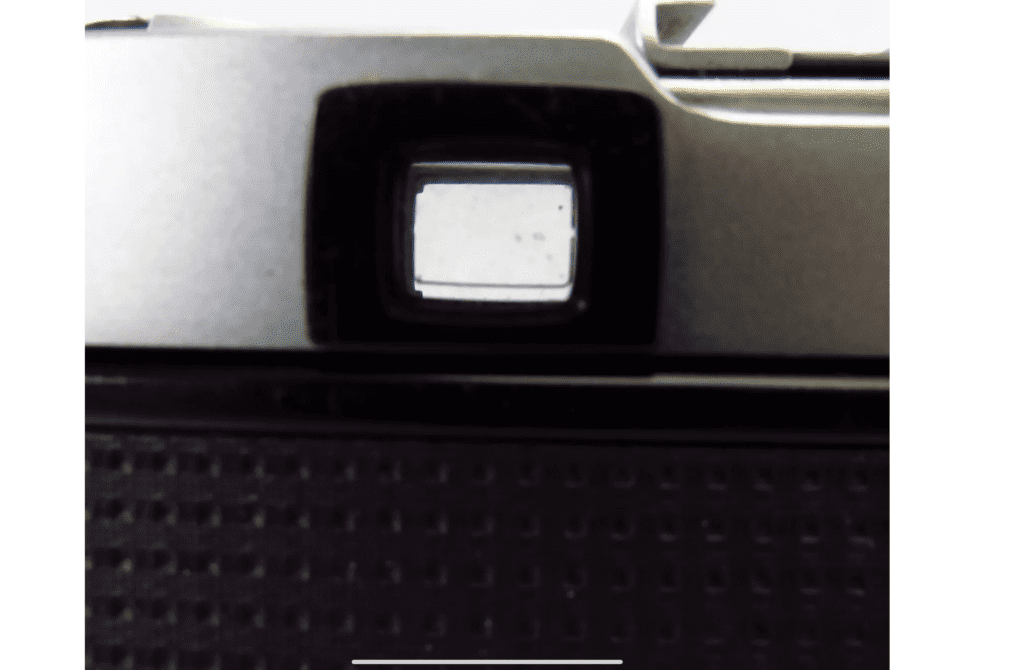
Scratches – The surfaces of the viewfinder front and rear are quite delicate and have often been cleaned in the past without using proper lens cleaner or materials that can scratch the surface. A heavily scratched viewfinder cannot be repaired, and it will spoil the enjoyment of looking through he viewfinder to compose your photos.
Viewfinder Fungus / Haze – This can be removed in a similar way to Lens Fungus. I find it really satisfying turning improving the quality of the line of sight through a viewfinder. It is like cleaning a window on a house that has not been cleaned for several years.
And now some other things to consider before buying an Olympus Trip 35…
In original bag – as mentioned with the lens cap earlier. Try and find cameras that have been stored in their original bag. Whilst most bags are now very tatty and in various states of decay, they do suggest that the cameras selenium light cells have been protected over the years.
Missing viewfinder / foam replacement – Look carefully at the rear viewfinder window and the black plastic frame. It is held to the camera by two thin plastic lugs that over time can become brittle and snap off. The original black plastic frame is often replaced with black foam. Hard to spot is some pre-sale photos… so zoom in and check.
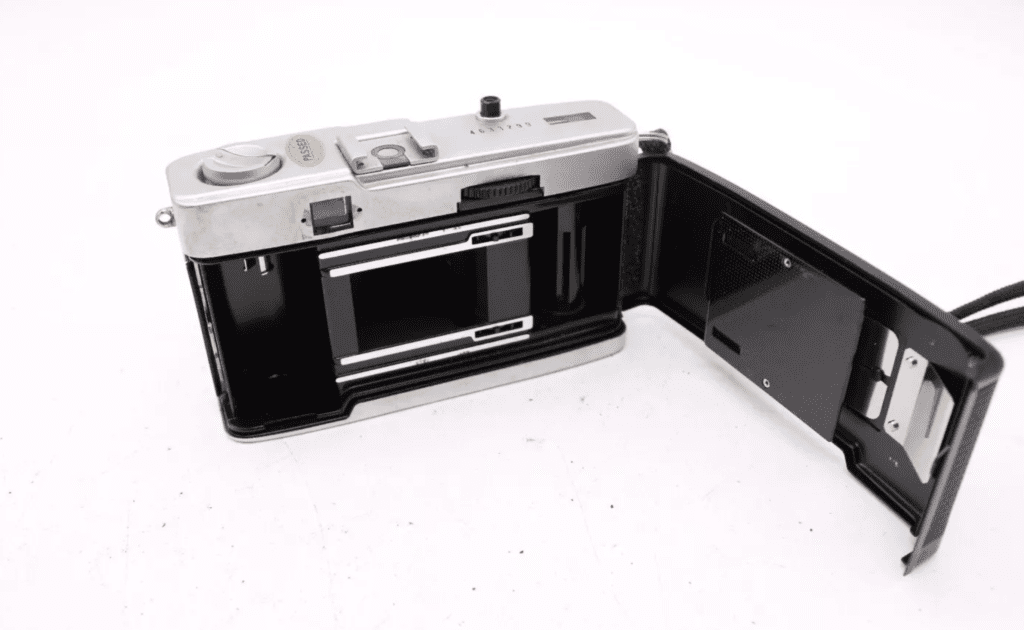

Light Seals – All original factory fitted light seals will now have perished and so new light seals will need to be replaced. We only use quality high density foam used by the MOD. This provides a perfect seal and keeps your delicate camera film in the dark.
Sticker residue – It’s nice to see an original “Passed” sticker on the top of the camera. Although I appreciate that some people don’t like them and have them removed. Check that if the sticker has been removed it has not left a ghost shape of the sticker on the metal which is sometimes hard to polish out.
Lens / Camera Rattle – The Olympus Trip is a robust and well built camera but over the years some parts will have worked loose or even come apart in the camera. This can be very problematic in the lens where very small parts exist. Check for rattles. If you find any then it will probably require a camera strip and search to find the problem.
Film counter winder – Often overlooked, the winder mechanism should move smoothly after each shot and the exposure counter move in sync with the number of shots taken. It is not uncommon to find these not working properly or the exposure counter not resetting to zero once a film has been used. We test all of these items with a test film so you can be sure everything will work as it should.
Jammed film release or even missing – When you complete a roll of film you will need to depress the small black film release button on the bottom of the camera. Check that this works correctly and more so, make sure it is there. I’ve seen a few cameras for sale where it is missing and so the camera would not work.
Benefits of Buying a Refurbished Olympus Trip 35
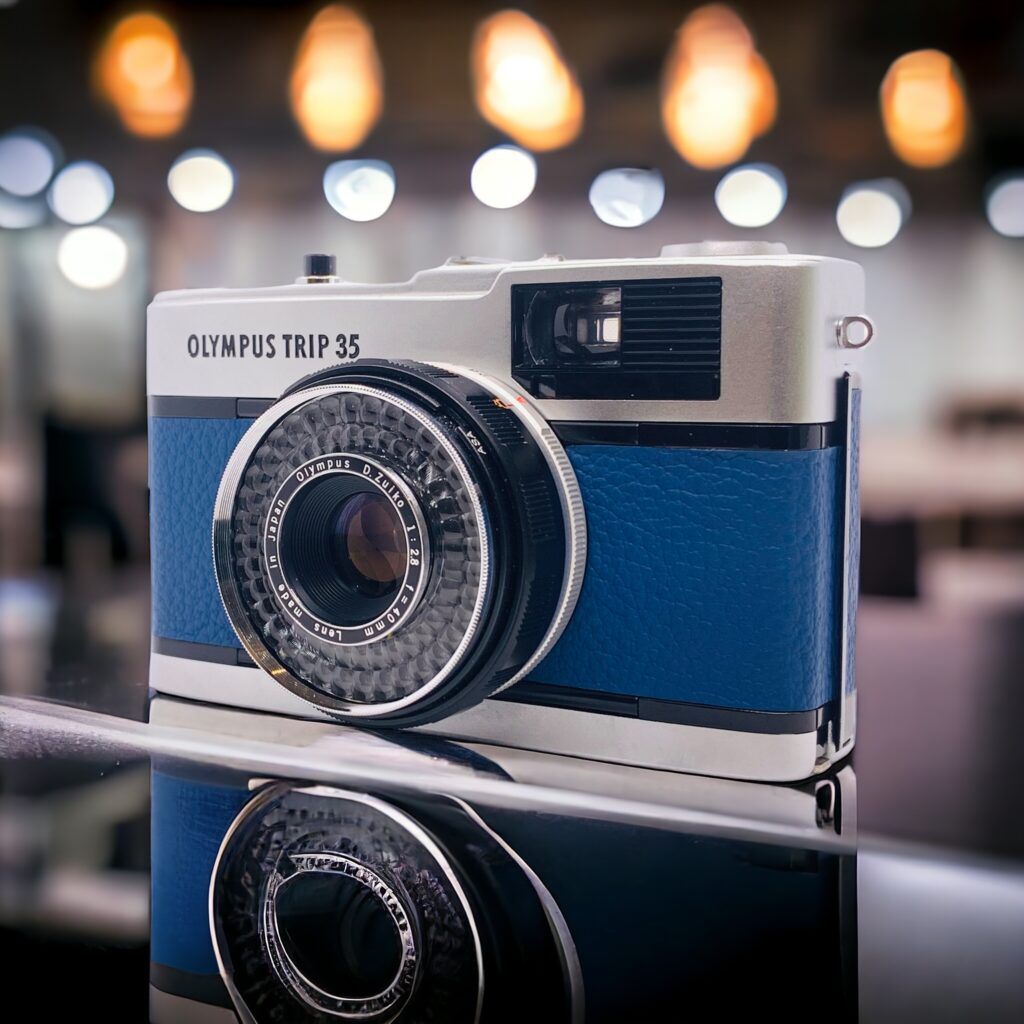
Opting for a refurbished Olympus Trip 35 offers several advantages. Refurbished cameras undergo thorough cleaning, servicing, and testing to ensure they function like new. Additionally, refurbished cameras often come with warranties, providing peace of mind to buyers.
Why Buy From Us?
At “Have A Nice Trip”, we specialise in refurbishing and servicing Olympus Trip 35 cameras only. We meticulously clean and adjust each camera, guaranteeing optimal performance. We offer a full warranty on all refurbished cameras, ensuring that you can enjoy your purchase without worries. We also have extended warranties and one that includes a full service on the anniversary of your purchase. Furthermore, we are available to provide support and guidance, making your photography experience truly enjoyable.
There you go…
The Olympus Trip 35 is more than just a vintage camera; it’s a timeless piece of photographic history. By following the tips in this buyer’s guide and choosing a refurbished camera from our store, you can embark on your film photography journey with confidence. Don’t settle for uncertainty when purchasing a vintage camera—choose quality, reliability, and peace of mind with us.


